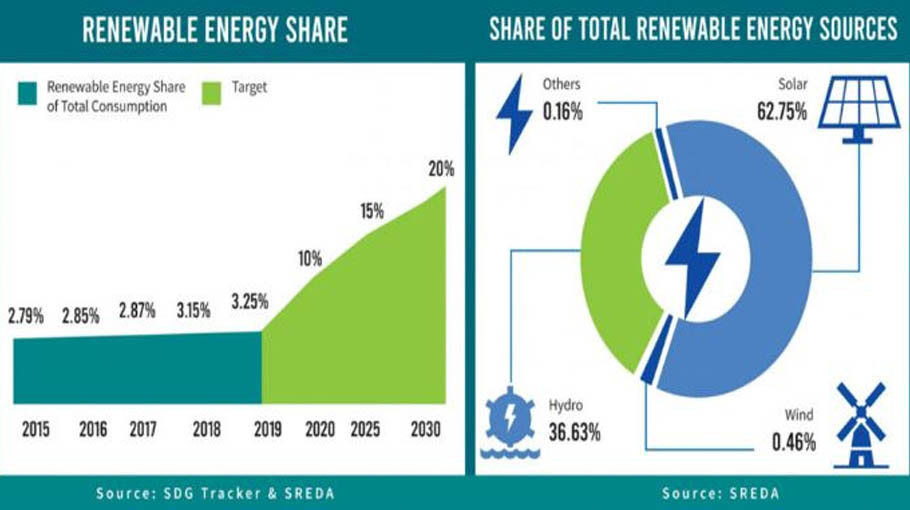Fast-track projects underway to negate energy crisis

The global fuel price hike sparked by the Russia-Ukraine war coupled with dwindling gas reserves off late prompted authorities to adopt fast track projects exploring solar energy, while experts suggest the wind power could be another major source to negate the crisis.
“We expect to get another 1,000 mw power exploring the solar power under a recently adopted fast track project,” energy ministry’s Power Cell chief Engr Mohammad Hossain told BSS.
He added that the Power Development Board (PDB) started selecting appropriate locations to install solar panels under arrangements with independent power producers (IPPs).
The power cell director general said three projects were underway to promote wind power in southern coastlines as Bangladesh moved to enhance the stake of clean energy sources in the national energy system as part of meeting the Sustainable Development Goals (SDGs).
“Bangladesh now generates more than 948.03 MW power from renewable sources against the production of plus minus 11,000 mw, which is over 5 percent of the total generation,” Hossain said.
The average officially estimated demand for power is around 11,800 mw.
Prime Minister’s energy affairs adviser Dr Tawfiq-e-Elahi Chowdhury recently expressed worries that the global energy crisis could hit Bangladesh badly urging all to be restrained in energy uses particularly against the backdrop of a jump of LNG prices as well as the petroleum.
“It is the utmost demand of the time to move in fastest possible time to explore solar and wind power . . . this is the only option to save our industry and meet the routine household demand in cheapest price,” former power cell director general BD Rahmatullah said.
He said if all policy supports and logistics were provided the country could produce 36,000 mw wind power in less than a year as international studies suggested “Bangladesh has a huge potential for wind energy, negating an existing perception”.
According to Energy Tracker Asia’s 2022 report, renewable energy’s share in Bangladesh’s power mix remains negligibly low but there is massive potential for solar and wind power in electricity generation.
“Bangladesh could deploy up to 156 gigawatts (GW) of utility-scale solar and 150 GW of wind,” the report said.
The incumbent power cell chief supplemented Rahmatullah saying Bangladesh has good potential for harnessing renewable energy sources such as solar, biomass, wind, and mini-hydropower.
He said various policy, initiatives and financial schemes were taken to make self reliance in energy and the government also exempted tax on solar panels and continued grants and concessional loans for renewable energy expansion in the country.
“We want to increase share of renewable sources to 40 percent and production mix will be ensured by 2050. Therefore, the power master plan is being updated,” said State Minister for Power, Energy and Mineral Resources Nasrul Hamid.
The draft roadmap for solar power-2041 is being reviewed, he said, adding, “In context of Bangladesh, solar power is more likely than other renewable sources. But it takes more land so innovative solutions are needed for solar power, although we are moving towards rooftop solar and floating solar technology.”
Nasrul said that net metering system has also been introduced to popularise rooftop solar power. “There were opportunities to do more with wind power. Wind mapping was done at nine sites and research will be conducted about offshore winds soon,” he said.




